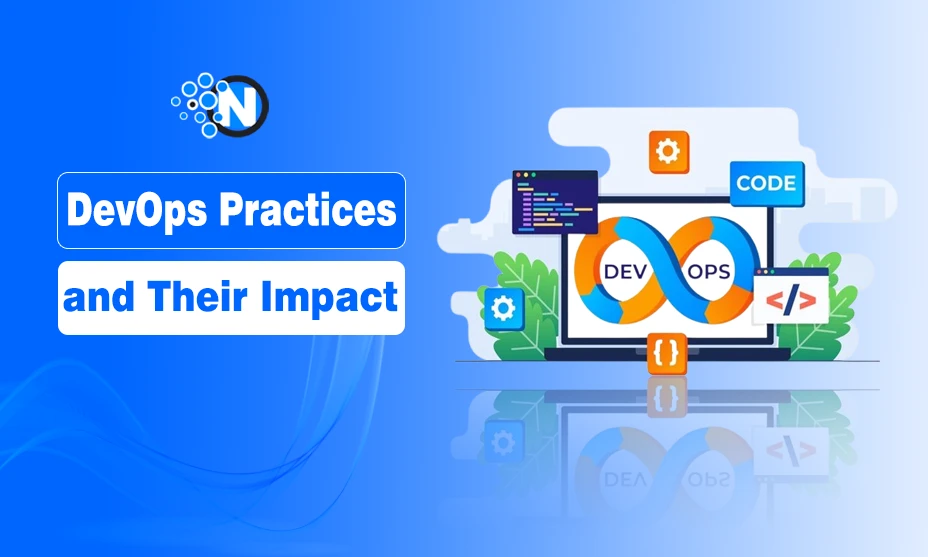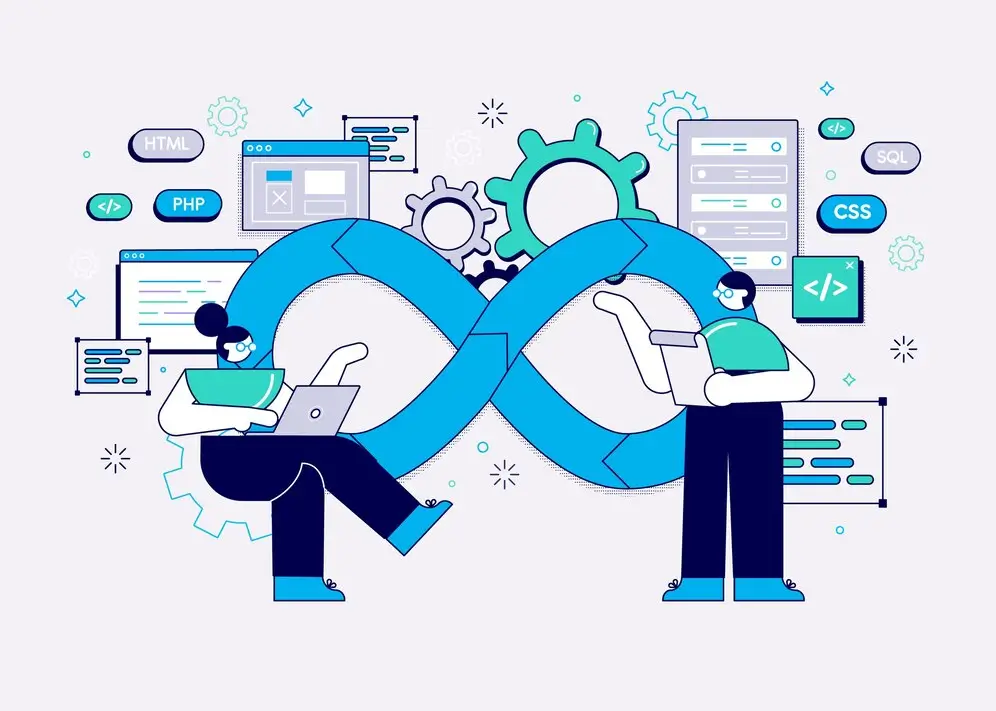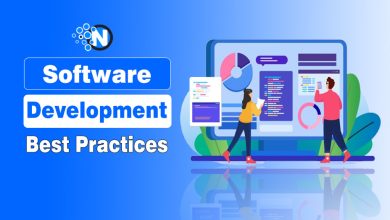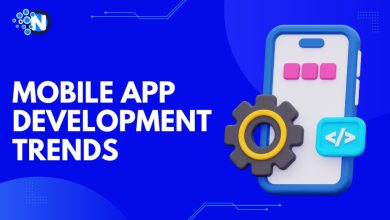DevOps Practices and Their Impact on Software Development

In the past 10 years, the software development landscape has undergone a seismic shift with DevOps. DevOps is a complete set for development and operations that is meant to be a shift in culture, process, and tooling to help developers and IT operations professionals work together better.
The DevOps movement, at its core, is a way to enable better software delivery and operational efficiency by using practices like continuous integration and continuous delivery (CI/CD), infrastructure as code (IaC), microservices architecture, monitoring and log analysis. DevOps, when done right, allows teams to speed up innovation, reduce risk, and react quickly and effectively to changing business conditions.
In this article, we’ll cover some key DevOps practices and principles and how they affect the software development process, culture, quality and business outcomes.
Core DevOps Practices and Principles
Though interpretations will differ across organizations, there are common DevOps practices and cultural ideals that most people agree on that enable rapid and reliable software delivery.

1. Continuous Integration and Continuous Delivery
Continuous integration and continuous delivery (CI/CD) is the most widely adopted DevOps custom software development practice. The build, test, and release processes of software are automated through a pipeline that represents CI/CD and accelerates the software delivery lifecycle. Even multiple times a day, developers frequently integrate code into a shared repository. Each code commit triggers an automated build that spawns a pipeline that runs unit and integration tests.
This rapid feedback loop enables teams to catch defects early when they’re less expensive to fix. All the test gates are passed and only code passes all the test gates gets deployed to production automatically which guarantees quality. Teams can thus release software updates in an efficient, low-risk way multiple times per day or week, accelerating innovation.
2. Infrastructure as Code
Infrastructure as code (IaC) treats infrastructure like application code, managing it through source control. IaC enables automation for provisioning, configuration management, and orchestration of infrastructure across environments.
Rather than manually setting up servers, databases, and other components, developers define the desired infrastructure via code using a domain-specific language. This infrastructure can then be provisioned automatically across dev, test, and production environments. IaC automates infrastructure provisioning and app deployments for consistency, efficiency, and dependability.
3. Monitoring and Logging
DevOps also relies on strong monitoring and logging practices. Monitoring provides visibility into system health, performance, and uptime and ensures teams get immediate notifications of incidents. Logging captures debug data that allows rapid diagnosis of problems.
Together, monitoring and logging give teams the observability needed to manage systems and applications efficiently. Teams can identify performance bottlenecks, troubleshoot issues quickly, and prevent outages. These practices help ensure system reliability and availability.
Microservices Architecture
Many DevOps shops adopt a microservices architecture. In this approach, applications are structured as small, independent services that run their own processes and communicate through APIs. These services can be developed, tested, deployed and scaled independently.
Microservices align well with core DevOps principles like rapid iteration and infrastructure automation. Small teams can build and update individual services rapidly. Microservices can also scale elastically to meet fluctuating demands. This architecture enables faster delivery of features to meet changing business requirements.
4. Cultural Ideals
While practices like CI/CD and IaC provide framework and consistency, cultural change is also central to DevOps. DevOps emphasizes values like collaboration, empathy, experimentation, and a focus on customer outcomes.
DevOps seeks to break down silos between developer and ops teams by boosting shared ownership, joint priorities, and collective responsibility for software delivery from development all the way through to production support. Leadership support, cross-functional teams, and shared metrics and incentives help enable this culture shift.
Impacts on Software Development
These DevOps practices and cultural ideals have fundamentally impacted software development methods and outcomes. Let’s explore some of the key effects.
1. Faster Delivery of New Features
Teams can significantly improve the rate at which new software features and updates are released to the market by automating tedious manual operations, establishing continuous testing, and streamlining the release process. Lead times from development to deployment can shrink from months to days or hours.
DevOps enables teams to take an iterative approach with faster build-measure-learn feedback loops. They can deliver minimum viable product (MVP) versions quickly, get user feedback, and continually refine and add features based on learning and evolving business needs. This agility allows engineering teams to drive more value for customers and the business.
Improved Software Quality
Although DevOps emphasizes speed, quality does not fall by the wayside. In fact, quality often improves too.
Early and frequent static analysis, code reviews, unit testing, integration testing, and monitoring baked into CI/CD pipelines catch defects rapidly. When bugs surface in hours rather than months, they get fixed promptly before additional code layers exacerbate issues.
Test automation also enables more consistent, high-quality testing that’s sustainable at higher release velocities. Engineers can ensure all code changes integrate smoothly and provide the intended value without introducing regressions.
Together, these practices reduce escape defects and field failures. Code is kept healthy through rapid iteration, enabling teams to deliver better quality software faster.
2. Lower Risk Releases
DevOps lowers risks associated with software releases and infrastructure changes. IaC gives teams the ability to test infrastructure changes by easily spinning up disposable dev and test environments. CI/CD test automation provides a consistent safety net for rapid validation of code changes.
DevOps practices significantly reduce deployment risks when combined with comprehensive monitoring and logging. If any issues surface post-deployment, teams can roll back changes quickly thanks to infrastructure automation and immutable infrastructure principles. IaC automates infrastructure provisioning and app deployments for consistency, efficiency, and dependability.
2. Improved Customer Satisfaction
With DevOps, teams can deliver features and fixes faster in response to customer feedback and evolving market conditions. They can also implement more sophisticated testing to ensure high quality. Together, these improvements lead to better customer experiences and satisfaction.
If issues arise after software release, integrated monitoring and logging provide the observability for rapid diagnosis and resolution of production problems. Less downtime and faster fixes for defects drive increased customer trust and loyalty.
3. Higher Productivity and Employee Engagement
DevOps automation eliminates tedious manual work, freeing up developer time for innovation and creativity. Reduced bureaucracy coupled with closer cross-functional collaboration also boosts productivity. One study by IBM found that companies using DevOps techniques might cut their time to market by up to 50% relative to more conventional approaches. The elimination of manual handoffs and the higher efficiency of automated procedures account for most of this notable decline.
Higher release velocity and autonomy foster greater pride and ownership in engineering teams. With DevOps practices, developers ship code more frequently and own services all the way to production. Visible progress and feedback loops lead to more engaged, motivated teams.
According to Puppet’s 2024 State of DevOps survey, DevOps correlates strongly with IT performance, productivity, and employee experience. Organizations with mature DevOps practices experience less burnout, higher job satisfaction, and better work-life balance across technical teams.
DevOps Challenges
While DevOps transformation promises many benefits, the journey also poses some common pitfalls and challenges that teams and leaders must navigate.
1. Overcoming Resistance to Change
Perhaps most significantly, DevOps requires major cultural and process changes that may meet resistance, especially in large, established organizations.
Implementing DevOps practices like CI/CD and infrastructure automation requires modernizing tools and processes. Adopting new technologies and ways of working can slow veteran teams accustomed to legacy systems and siloed workflows. Organizations must foster buy-in at all levels and implement changes thoughtfully to help teams embrace new tools.
2. Re-Skilling and New Hires
Existing staff will need to learn new skills like infrastructure coding, automation scripting, container orchestration, and monitoring. DevOps also requires more collaboration and end-to-end ownership. Organizations may need to provide training and coaching to help teams adapt.
In parallel, hiring managers must recruit engineers and leaders with modern skill sets and transformational mindsets. Organizations lacking internal DevOps, SRE and cloud-native expertise may choose to onboard specialized consultants or managed services providers to catalyze transformation.
Integration Challenges
Transitioning from monoliths to microservices poses complexity. Large legacy applications often can’t be decomposed rapidly without risking stability. Organizations may choose an incremental approach, slowly extracting services over time. In the interim, integration challenges will emerge with hybrid architectures consisting of some microservices and lingering monoliths.
Tool sprawl can also complicate integration between CI/CD components, infrastructure provisioning, monitoring systems, and other solutions. Careful pipeline orchestration and observability instrumentation are essential to smooth technology integration, especially for complex hybrid environments.
3. Cultural Inertia
An exclusively tools-driven approach won’t enable meaningful DevOps transformation on its own. Without sincere commitment to culture change from leaders, friction between developer and ops teams may persist.
Organizations can’t simply overlay DevOps practices on existing dysfunction or siloed teams without addressing the underlying people challenges that necessitate cultural transformation. Leadership must foster an environment truly centered on shared goals, empathy, and accountability.
Key Takeaways
Here are some closing thoughts on DevOps evolution:
- Core DevOps practices like CI/CD, IaC and comprehensive monitoring enable teams to deliver software faster and more reliably. Microservices architecture and cultural ideals like shared ownership further reinforce velocity and quality goals.
- These practices have transformed software development by accelerating release cycles, reducing risk, and improving system stability. Developers can now build and deploy code changes safely multiple times daily if needed.
- Faster feature delivery, higher productivity, and increased stability all lead to better customer experiences. DevOps practices promote faster innovation cycles, better quality, and lower business risk.
- However, realizing DevOps outcomes requires an earnest commitment to process improvement and cultural change. Organizations must modernize tools, reskill teams, address integration complexity, and foster cross-functional bonding.
Future Perspectives
DevOps principles will continue maturing from fringe concepts to standard practice for most software teams in the coming years. Organizations that transform workflows, upskill staff, and unite developer and ops teams will gain tremendous competitive advantage.
While the DevOps journey brings some inevitable growing pains, the long-term benefits for velocity, quality, risk reduction and customer satisfaction prove well worth the investment.




